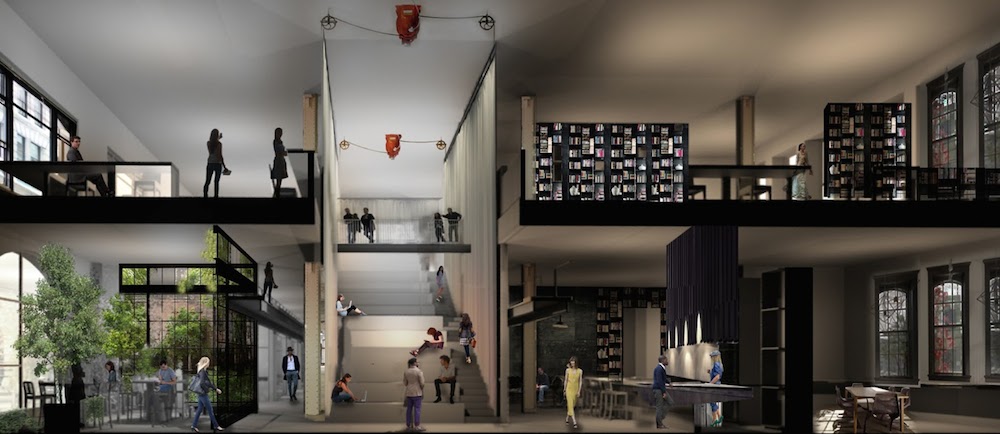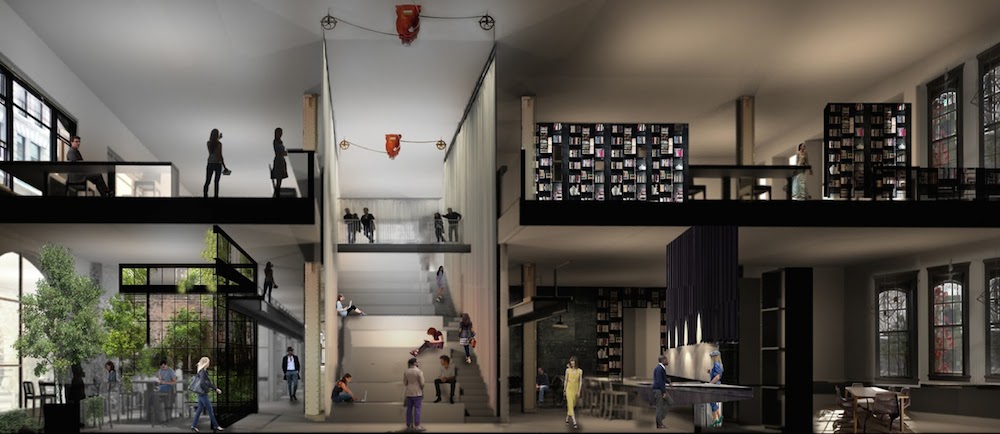Save 50% on a 3-month Digiday+ membership. Ends Dec 5.

Gawker Media boss Nick Denton has a contradictory view of the state of media. It is undeniably being swamped by tech changes, and yet all around him he sees venture capital-fueled madness based on that very premise.
In a memo Denton sent this afternoon to Gawker’s 280 employees to announce its new office space in New York and Budapest, he declared Gawker as a “financially sober independent company in an online media sector drunk on cheap finance and its own hype.”
There’s an irony in Gawker, which regularly has played the rebel, now casting itself in a more conservative light. It has steered clear of venture capital while competitors like BuzzFeed, Vox Media and Business Insider have raked in tens of millions of it.
BuzzFeed and the like might not be to Denton’s taste, but he agrees with them on the central role of technology in media companies. For Gawker, that means Kinja, its blogging platform that Denton sees as “our model for the future of independent media.”
Our engineers have built the foundations of our own social discovery network, with functions such as follow and star proving increasingly useful signals for content recommendations. New Kinja-enabled spin-offs such as Foxtrot Alpha and Indefinitely Wild show one can recapture the intimacy and fun of an independent blog, while maintaining the scale of a viable media business.
The big bet, Denton notes, is that the media industry is about to be “eaten” by software, as VC Marc Andreessen has predicted.
The media ecosystem is no exception; in fact it is crying out for simplification and streamlining through software. If there’s any eating to be done, we’ll be one of the companies around the table. At stake is not just our own long-term future, but the viability of intelligent independent media in a sector dominated by hype-fueled ventures, media conglomerates and tech giants.
Denton’s memo claims that Gawker ad revenue is up 32 percent compared to last year, and traffic to its eight core properties is up 63 percent. Gawker’s workforce has expanded 22 percent from last year.
For its new offices in Union Square, Gawker has taken a lease for three floors and 60,000 square feet of space.
The full memo is below.
I have some big news about the company’s expansion and future plans. In particular, we will be moving out of the walk-up Nolita loft space that has been our home since 2008. Earlier today, we signed a lease for three floors of 114 Fifth Avenue.
It’s a long-term commitment funded from our growth over the last three years — and a mark of our confidence in the prospects for online media, and our own trajectory.
Ad rendering preventing in staging
Ad position: web_incontent_pos1But let’s recap where we are first. As a company, we’ve been quiet — and that’s only in part to do with me being away on honeymoon and sabbatical.
We’re a financially sober independent company in an online media sector drunk on cheap finance and its own hype. And we’ve been heads-down, working on Kinja, the platform for bloggers that is our model for the future of independent media.
Our engineers have built the foundations of our own social discovery network, with functions such as follow and star proving increasingly useful signals for content recommendations.
New Kinja-enabled spin-offs such as Foxtrot Alpha and Indefinitely Wild show one can recapture the intimacy and fun of an independent blog, while maintaining the scale of a viable media business.
The forthcoming version of the Editor is the most considered user interface we’ve developed, an indicator of things to come.
Ad rendering preventing in staging
Ad position: web_incontent_pos2And we’re upgrading engineering and product management to ensure our talented developers in Budapest and New York are stretched to their full potential.
I believe, with Marc Andreessen, that software is eating the world. The media ecosystem is no exception; in fact it is crying out for simplification and streamlining through software.
If there’s any eating to be done, we’ll be one of the companies around the table. At stake is not just our own long-term future, but the viability of intelligent independent media in a sector dominated by hype-fueled ventures, media conglomerates and tech giants.
But in the meantime, our eight core media properties are growing fast — and that demands new space.
Revenues from direct advertising and e-commerce are running 32% ahead of last year. The monthly US audience across the eight core brands hit 80m in August, 63% ahead of a year ago. Headcount is 280, up from 230.
We are bursting at the seams in both Budapest and New York.
The new New York office will be located at 114 Fifth Avenue. We’ve taken on three floors totaling nearly 60,000 sq feet. We’ll be subletting one of the floors for a few years, with plans to expand into it later.
From 17th Street, Gawker Media will have its own walk-up entrance. That will provide the cultural continuity with our longtime Nolita space. (We couldn’t imagine mischievous bloggers going through the main lobby.) For staff coming from Williamsburg and several other Brooklyn locations, the subway commute will be seven minutes shorter.
The office will be on the second and third floors, with a public and performance space connecting the two. That will be open, a thoroughfare designed to promote random interaction. By contrast, the working space will be arranged in what we call studios, spaces contained on three sides designed for teams of half a dozen people or so to collaborate on projects without disturbing others.
A similar concept informs our plans for the new Budapest office, which we are developing together with the design team at Brody House, the organization that has often hosted us in Budapest. Their mandate is to restore a 30,000-square-foot building at Andrassy ut 66, the former office building of the state railways, in the style that we like so much in their other properties.
Brody will be creating a mixed-use space — comprising a cafe, bar and retail space — on the ground floor. We’ll renovate the other floors to be offices for ourselves and Hungarian media, design and technology startups.
We ran Gawker Media’s Budapest operation for several years out of an apartment in Ujlipotvaros. In New York, we used to work out of my apartment on Crosby Street, and then across the road at what is now a bike shop.
In the New Yorker profile, I explained my reluctance to take on the fixed cost of an office. “If you run it out of your house, then no one expects anything.” We have higher expectations of ourselves now. For want of others seeking the role, we are the guardians of independent media.
It’s a daunting responsibility that I would never have expected. The transition — from model for independent media to platform for independent media — will be a long one. This is the working environment that we deserve.
More in Media

Digiday+ Research Subscription Index 2025: Subscription strategies from Bloomberg, The New York Times, Vox and others
Digiday’s third annual Subscription Index examines and measures publishers’ subscription strategies to identify common approaches and key tactics among Bloomberg, The New York Times, Vox and others.

From lawsuits to lobbying: How publishers are fighting AI
We may be closing out 2025, but publishers aren’t retreating from the battle of AI search — some are escalating it, and they expect the fight to stretch deep into 2026.

Media Briefing: Publishers turn to vertical video to compete with creators and grow ad revenue in 2026
Publishers add vertical video feeds to their sites to boost engagement, attract video ad spend and compete with news creators.
Ad position: web_bfu


